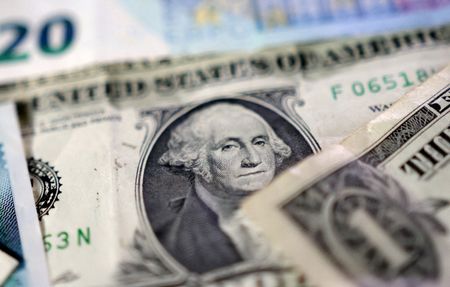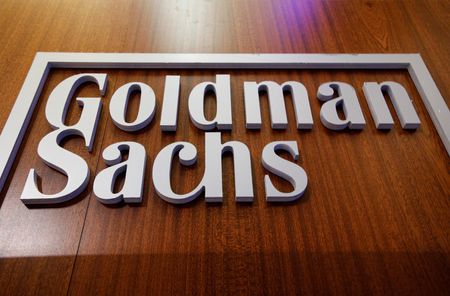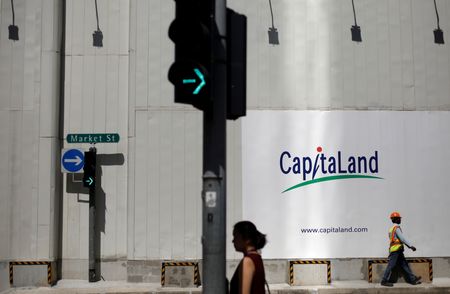By Saqib Iqbal Ahmed
NEW YORK (Reuters) -The dollar eased against the euro on Tuesday after U.S. consumer prices increased moderately in July, leaving intact the case for a Federal Reserve interest-rate cut next month
The consumer price index rose 0.2% last month after gaining 0.3% in June, the Labor Department’s Bureau of Labor Statistics said on Tuesday.
In the 12 months through July, the CPI advanced 2.7% after rising 2.7% in June. Economists polled by Reuters had forecast the CPI rising 0.2% and increasing 2.8% year-on-year.
“Underlying inflation remains subdued, giving policymakers room for maneuver as they respond to signs of incipient weakness in labor markets,” Karl Schamotta, chief market strategist at Corpay, said.
“Chair Powell should put a September cut on the table when he speaks at Jackson Hole on the 21st,” Schamotta said, referring to the Fed’s Jackson Hole Economic Symposium later this month.
Currency markets had been in a holding pattern earlier as expectation grew that a moderate reading on U.S. price pressures could cement bets for a Fed rate reduction next month, which increased after last week’s soft payrolls data.
The euro erased earlier losses against the buck to trade up 0.06% at $1.16235. The greenback pared gains against the yen to trade 0.17% higher at 148.390 yen.
“Yield differentials are narrowing against the dollar across the policy-sensitive end of the curve, and the greenback is coming under sustained selling pressure against its advanced-economy rivals,” Schamotta said.
“This could persist through the end of the summer if incoming data releases confirm a deceleration in the U.S. economy,” he said.
GLOBAL GROWTH
Still, with the jury still out on the impact of tariffs on global growth, predicting how the dollar will react through the end of the year remained challenging, Schamotta said.
On Tuesday, speculation about a change of leadership at the Fed was back as Former St. Louis Federal Reserve Bank President James Bullard said he would accept the role of Fed Chair if it was offered to him.
Bullard told CNBC that he would accept the job “if we can protect the value of the dollar … that’ll give us lower interest rates over time; if we aim for low and stable inflation, (and) respect the independence of the institution under the Federal Reserve Act”.
Meanwhile, Sterling was up 0.4% on the dollar at $1.34805 after data that showed Britain’s jobs market weakened further, albeit more slowly, while wage growth stayed strong – the latter underscoring why the Bank of England is so cautious about cutting interest rates. [GBP/]
The numbers ought not to cause the Bank of England to accelerate the speed of its rate cuts. The BoE cut rates only last week in a tight 5-4 vote.
The Australian dollar fetched $0.64945 <AUD=D3>, down 0.3%, after the Reserve Bank of Australia’s widely-expected decision to cut rates by a quarter point. The central bank cited a slowdown in inflation and a looser labor market, though it was cautious on prospects for further easing.
“We remain of the view that a follow-up cut in November is more likely than not, with the cash rate to then stay at 3.35% for an extended period,” said Adam Boyton, head of Australian economics at ANZ, in a note.
Currency markets largely ignored Trump’s decision to extend a pause in sharply higher tariffs on Chinese imports for another 90 days, as widely expected.
Cryptocurrency bitcoin <BTC=> was about flat around $119,395, after climbing as high as $122,308.25 on Monday, taking it close to the all-time peak of $123,153.22 from mid-July.
(Reporting by Saqib Iqbal Ahmed; Additional reporting by Kevin Buckland in Tokyo and Alun John in London; Editing by Kim Coghill, Mark Potter, Emelia Sithole-Matarise and Ed Osmond)











